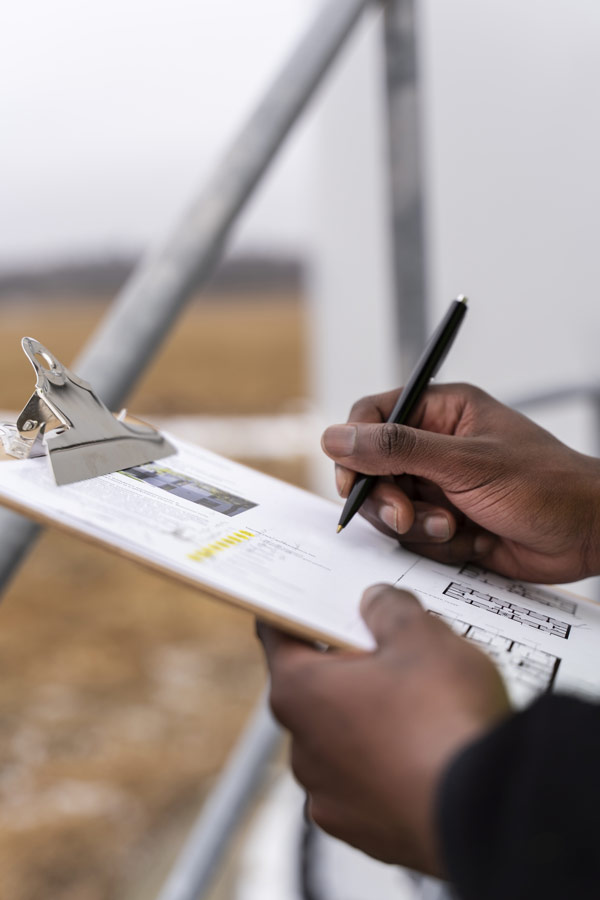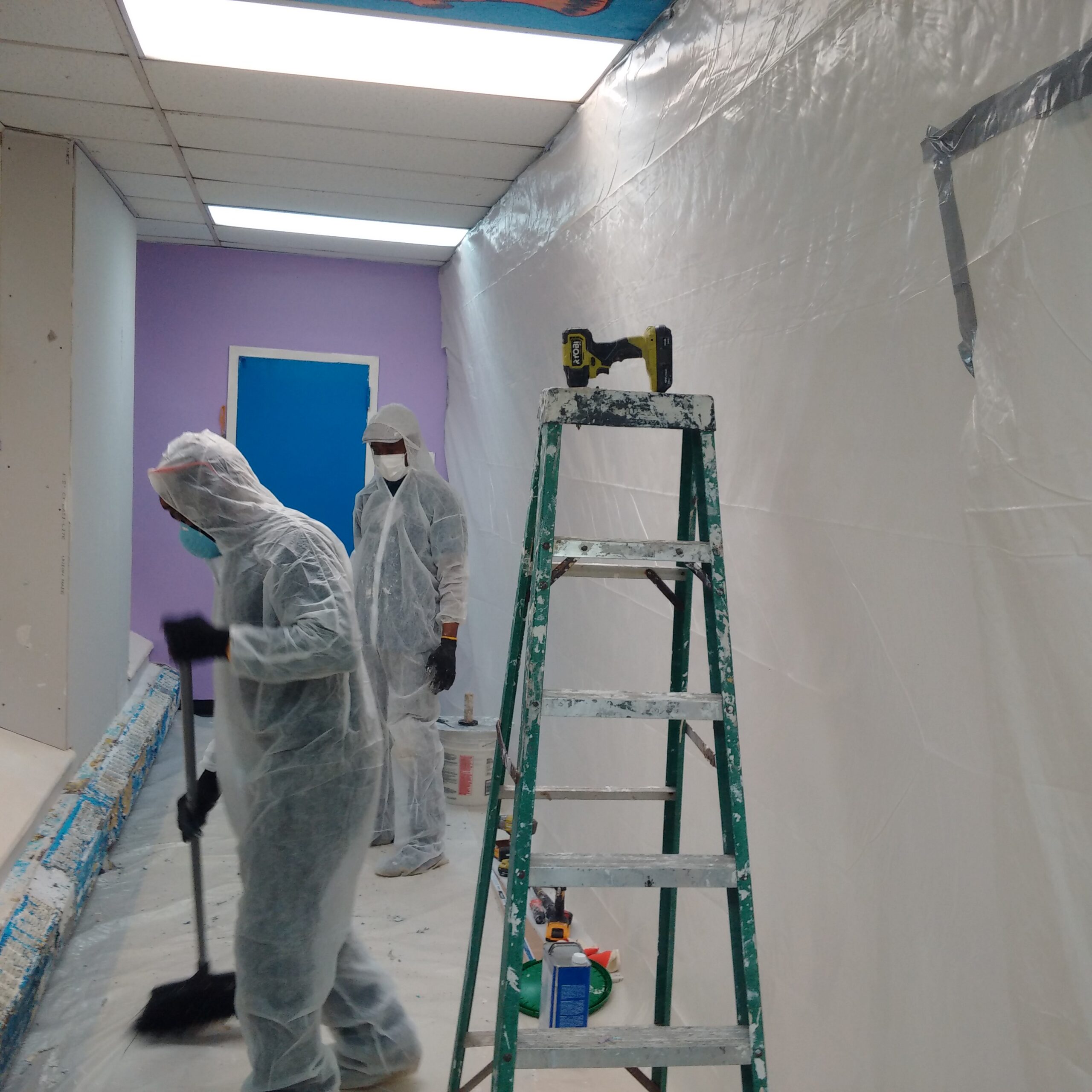Comprehensive Lead Paint Removal Service in NYC-- Licensed and Certified
Comprehensive Lead Paint Removal Service in NYC-- Licensed and Certified
Blog Article
Comprehensive Overview on Effective Lead Infraction Elimination Strategies
In the realm of environmental safety, dealing with lead infractions requires a thorough and organized strategy. This comprehensive overview starts by highlighting the critical initial steps of identifying lead risks with sophisticated evaluation and screening techniques. Methods such as XRF analysis and dust wipe tasting are important in determining contamination resources. In addition, the guide clarifies on the value of sticking to rigid security procedures during the removal process, consisting of using correct PPE and separating impacted areas (Lead Paint Removal Company). The subsequent sections promise to go over post-removal confirmation and preventive techniques, making certain long-lasting safety and compliance. Discover the detailed details that make these techniques not just effective but vital.
Identifying Lead Hazards
Determining lead dangers is an important initial step in mitigating the threats connected with lead exposure. Lead, a harmful steel, can be existing in different ecological mediums, including paint, soil, water, and dirt. It poses severe wellness risks, specifically to children and expecting ladies, resulting in neurological damage and developmental delays. Consequently, precise recognition of possible lead sources is essential for effective remediation.
The first phase in determining lead dangers entails comprehending typical lead resources within the constructed environment. Frameworks constructed prior to 1978 are particularly prone as a result of the widespread usage of lead-based paint throughout that period. Additionally, soil contamination can happen from deteriorating outside paint, industrial discharges, or historical use leaded gas.
Another significant resource is lead piping and pipes components, which can leach introduce alcohol consumption water. Durable goods such as toys, ceramics, and imported items may likewise include damaging lead levels. Notably, job-related environments and pastimes involving lead can track pollutants right into homes.
Evaluation and Testing
When attending to lead hazards, effective analysis and screening are critical. This essential action ensures the identification and metrology of lead visibility, thus leading subsequent removal initiatives. Preliminary analysis generally involves a visual inspection to determine potential lead resources, such as weakening paint or contaminated dust. This is complemented by more extensive testing methods to determine the level of contamination.

Dust clean tasting is one more critical method, especially in household settings. By gathering samples from floorings, windowsills, and various other surface areas, this approach offers understandings into potential exposure dangers. Soil testing around building perimeters is vital to detect lead contamination that might pose hazards, specifically to youngsters.
Safe Elimination Treatments
Upon finishing extensive analysis and screening, carrying out risk-free removal treatments is the following critical phase in addressing lead threats. This procedure makes sure that lead-contaminated materials are efficiently and securely eradicated, minimizing threat to both employees and citizens. The initial step entails separating the damaged area using plastic sheet and appropriate securing strategies to protect against the spread of lead dirt.
Workers must put on suitable personal safety tools (PPE), consisting of respirators, gloves, and disposable coveralls, to reduce direct exposure. Using specialized tools and wet approaches, such as wet fining sand or utilizing HEPA-filtered vacuum cleaners, lowers the diffusion of lead bits. It is essential to stay clear of dry fining sand or unpleasant blasting, as these techniques can generate damaging lead dust.
Waste disposal is one more crucial element; all contaminated materials must be safely bagged and identified according to EPA and local regulations. Additionally, detailed cleaning of the workplace with HEPA vacuums and wet cleaning guarantees the elimination of residual lead fragments.
Post-Removal Verification

Verification of successful lead removal, referred to as post-removal verification, is critical to guarantee the safety and security and habitability of the remediated area. This procedure involves a series of thorough evaluations and tests created to discover any kind of recurring lead bits that may position health threats. The first step usually consists of an aesthetic examination to analyze the completion and quality of the remediation work. This assessment makes certain that all recognized sources of lead have been resolved which no noticeable indicators of contamination continue to be.
Following the go to this site visual inspection, environmental tasting is performed. This entails accumulating dust, dirt, and in some cases water samples from the remediated location. Accredited laboratories examine these samples to measure lead degrees, guaranteeing they fall below the safety and security thresholds established by regulatory bodies such as the Environmental Protection Firm (EPA)
Furthermore, air high quality testing may be carried out to spot airborne lead bits, specifically in situations where comprehensive lead-based paint elimination or renovation has actually happened. The results of these examinations supply quantitative information verifying that the lead levels are within permitted limits.
Inevitably, post-removal verification works as an essential find more checkpoint, confirming the efficiency of the lead abatement initiatives and protecting the health of passengers and visitors.
Preventive Measures and Maintenance

A key safety net consists of the use of lead-safe licensed service providers for any type of renovation, repair service, or painting activities. These experts are learnt practices that lessen lead dust and particles. Additionally, keeping colored surface areas to stay clear of cracking or peeling off is important, as degrading paint can launch lead bits into the setting.
Educational efforts targeting homeowner and occupants regarding the threats of lead and the significance of reporting any kind of potential dangers can further enhance precautionary efforts. Regular cleansing using HEPA vacuum cleaners and damp mopping strategies can substantially lower lead dust buildup.
Final Thought
In summary, effective lead violation elimination demands a thorough approach encompassing extensive evaluation, precise testing, and strict elimination treatments. Guaranteeing security with proper seclusion and personal safety tools continues to be paramount. Post-removal confirmation using ecological tasting and air top quality screening corroborates compliance with well-known safety and security criteria. Furthermore, ongoing evaluations and maintenance are necessary to reduce future lead hazards, thereby securing public health and wellness and making sure sustained conformity with regulatory Find Out More needs.
Report this page